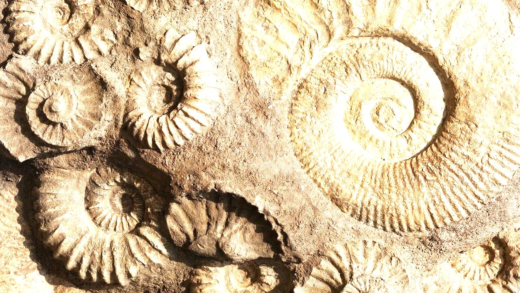Pufferfish are intriguing marine creatures known for their unique adaptations, including their ability to puff up as a defense mechanism. They inhabit various environments such as coral reefs and brackish waters, playing significant roles in their ecosystems. As pets, they require specific care and conditions to thrive. Understanding their behaviors and dietary needs can enhance appreciation for these remarkable fish.
Pufferfish Species: Discovering the Variety
Pufferfish species are fascinating creatures that inhabit various marine environments. There are around 120 different species of pufferfish, each exhibiting unique characteristics and adaptations. Some of the most notable include:
- Freshwater Pufferfish: These species, such as the Tetraodon, thrive in rivers and lakes, showcasing vibrant colors and distinct personalities.
- Marine Pufferfish: Found in oceans, these pufferfish, including the Mbu puffer, display impressive size and unique shapes.
- Brackish Water Pufferfish: These adaptable species can live in both freshwater and saltwater, showcasing remarkable resilience.
Each species has its own habitat preferences and behaviors, making them intriguing subjects for both aquarists and researchers. Understanding these varieties helps enthusiasts appreciate the biodiversity within the pufferfish family.
How Pufferfish Puff Up: The Science Behind It
Pufferfish puff up as a defense mechanism against predators. When threatened, these fish ingest water or air, inflating their bodies to several times their normal size. This not only makes them harder to swallow but also reveals spines that deter potential attackers. The mechanism involves:
- Elastic Stomach: The pufferfish’s stomach can expand dramatically due to its unique muscular structure.
- Nervous Response: A quick reaction to perceived threats triggers the puffing behavior.
- Behavioral Adaptation: Some species can control their inflation more effectively than others, showcasing evolutionary advantages.
This inflation process is not just for show; it plays a crucial role in their survival. Understanding this fascinating adaptation highlights the incredible evolutionary strategies of pufferfish.
Unique Traits of Pufferfish: Beyond Inflation
Pufferfish possess several unique traits that set them apart from other marine life. Beyond their ability to puff up, these fish have:
- Toxicity: Many pufferfish contain tetrodotoxin, a potent neurotoxin that makes them dangerous to potential predators, including humans.
- Coloration: Their vibrant colors often serve as a warning to predators about their toxicity, making them visually striking.
- Intelligence: Pufferfish display notable problem-solving abilities and can recognize their owners in captivity.
These traits not only enhance their survival but also make them captivating creatures for study and observation. The unique adaptations of pufferfish contribute significantly to their ecological roles and the overall biodiversity of marine environments.
Pufferfish Dangers to Humans: What You Should Know
Pufferfish are not just cute and quirky; they also pose significant dangers to humans. The primary threat comes from their toxicity. Many pufferfish species contain tetrodotoxin, a powerful neurotoxin that can be lethal. This toxin is found in various body parts, including the skin and internal organs. The risk of poisoning is especially high when consuming improperly prepared pufferfish, known as fugu in Japanese cuisine. Here are some critical points to consider:
- Symptoms of Poisoning: Symptoms can include nausea, vomiting, paralysis, and even death within hours of ingestion.
- Fatalities: There are reports of fatalities associated with consuming pufferfish, emphasizing the need for expert preparation.
- Regulations: In many countries, strict regulations govern the sale and preparation of pufferfish to ensure safety.
Understanding the dangers associated with pufferfish is crucial for anyone considering them as a delicacy. Always ensure that you consume pufferfish prepared by licensed chefs trained in handling this toxic fish.
Pufferfish Diet in Natural Habitat: What They Eat
Pufferfish are omnivorous and have a varied diet in their natural habitat. Their diet primarily consists of:
- Algae: Pufferfish often graze on algae, which provides essential nutrients.
- Crustaceans: They enjoy small crustaceans, including shrimp and crabs, which contribute to their protein intake.
- Shellfish: Some species feed on mollusks, using their strong beaks to break through hard shells.
This diverse diet plays a crucial role in maintaining their health and growth. The availability of food sources can vary based on the habitat, influencing their behavior and distribution. By understanding what pufferfish eat, aquarists can better replicate these conditions in captivity to ensure the well-being of their pets.
Pufferfish Defense Mechanisms: More Than Just Puffing Up
While puffing up is a well-known defense mechanism of pufferfish, they employ several other strategies to protect themselves from predators:
- Camouflage: Many pufferfish species can change color to blend in with their surroundings, making them less visible to predators.
- Spines: When inflated, their spines become more pronounced, deterring attackers.
- Behavioral Tricks: Some pufferfish exhibit erratic swimming patterns or play dead when threatened, which can confuse predators.
These defense mechanisms highlight the pufferfish’s adaptability and evolutionary success in avoiding predation. By understanding these strategies, enthusiasts can appreciate the complexity of pufferfish behavior in the wild.
Pufferfish Habitat in the Ocean: Where to Find Them
Pufferfish are primarily found in tropical and subtropical waters, showcasing a preference for warm ocean environments. Their habitats vary significantly depending on the species. Common locations include:
- Coral Reefs: Many pufferfish species thrive in vibrant coral reefs, where they find ample food and shelter.
- Shallow Coastal Waters: These areas provide a rich environment for pufferfish, allowing them to forage for algae and small crustaceans.
- Brackish Waters: Some pufferfish can adapt to brackish environments, often found where freshwater meets the ocean.
Understanding the specific habitats of various pufferfish species aids in conservation efforts and informs aquarists about the ideal conditions for keeping these fascinating fish.
Role of Pufferfish in Ecosystem: Their Importance
Pufferfish play a vital role in marine ecosystems. As both prey and predator, they contribute to the balance of aquatic life. Their importance includes:
- Control of Algae Growth: By feeding on algae, pufferfish help maintain healthy reef ecosystems, preventing overgrowth that can suffocate corals.
- Food Source: Pufferfish serve as a food source for larger marine predators, thereby supporting the food web.
- Indicator Species: The health of pufferfish populations can indicate the overall health of marine ecosystems, making them essential for ecological studies.
Understanding the ecological role of pufferfish highlights their significance in maintaining biodiversity and ecosystem health.
Pufferfish as Pets Requirements: What You Need to Know
Keeping pufferfish as pets requires specific conditions to ensure their health and well-being. Here are essential requirements:
- Aquarium Size: A larger tank (at least 30 gallons) is necessary to accommodate their size and swimming needs.
- Water Quality: Pufferfish require clean, filtered water with stable pH levels and appropriate salinity for their species.
- Diet: A varied diet including pellets, frozen foods, and live prey is crucial for their nutrition.
Potential pet owners should research the specific needs of the pufferfish species they intend to keep. This preparation ensures a thriving environment for these unique fish.
Interesting Pufferfish Behaviors in the Wild: Unique Observations
Pufferfish exhibit several intriguing behaviors in their natural habitats. Notable observations include:
- Puffing Mechanism: Beyond defense, they may puff up when excited or during mating displays.
- Social Interaction: Some species show social behavior, interacting with each other through playful movements.
- Hiding and Burrowing: Pufferfish often hide in sand or rocks, using their ability to camouflage to avoid predators.
These behaviors not only make pufferfish fascinating to observe but also contribute to their survival strategies in the wild.





Comments are closed.